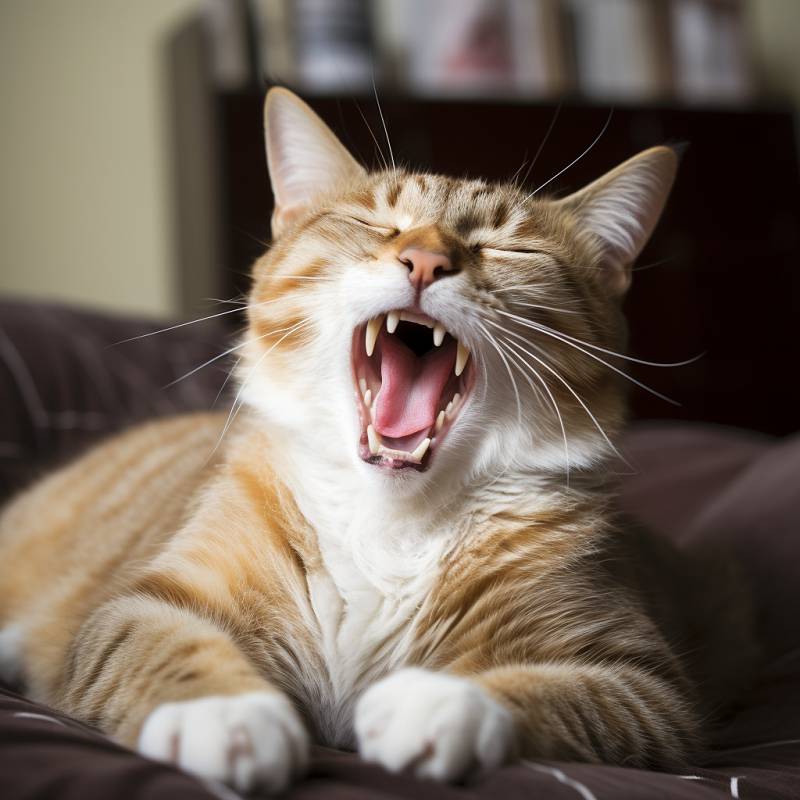 Introduction: Have you ever marveled at your cat’s impressive set of teeth? These tiny wonders aren’t just for show – they are finely tuned instruments evolved over millions of years to turn your furry friend into a top-notch predator. In this article, we’ll take a closer look at the incredible design of feline teeth, their unique functions, and what you, as a cat owner, should know to ensure your cat’s oral health.
Introduction: Have you ever marveled at your cat’s impressive set of teeth? These tiny wonders aren’t just for show – they are finely tuned instruments evolved over millions of years to turn your furry friend into a top-notch predator. In this article, we’ll take a closer look at the incredible design of feline teeth, their unique functions, and what you, as a cat owner, should know to ensure your cat’s oral health.
A Glimpse into the Evolutionary Marvel: When dogs and cats embarked on their distinct evolutionary journeys, feline teeth underwent remarkable changes. The structure and arrangement of feline teeth are perfectly tailored for hunting, making them true predators. The curved eye teeth (often called canines) with specialized blood-letting grooves enable quick and nearly painless stabs, while the powerful jaw muscles allow cats to exert precise pressure ranging from 1 psi to a whopping 180 psi.
The Perfect Toolset for Hunting: Feline teeth are designed for efficiency. The back teeth, called carnassials, are designed for slicing through skin, muscles, and organs, effortlessly turning prey into bite-sized morsels that are swallowed whole. Unlike humans or other animals that chew, cats gulp down their food in one go – an essential feature of their predatory prowess.
Unveiling Dental Differences: Cat teeth are vastly different from human teeth, and their dental health is equally unique. Feline tooth enamel is only a third as thick as human enamel, making brushing potentially counterproductive. Despite popular belief, fluoride doesn’t address the common dental disease in cats – Feline Odontoclastic Resorptive Lesions (FORLs). These lesions have been identified in ancient Egyptian cat remains, indicating that they’ve been part of feline life for centuries.
Oral Health: Not a Homogeneous Experience: Cats, like humans, have individual oral health experiences. Periodontal disease affects around 85% of cats by 3-4 years old, regardless of their environment. A study of feral cats in Kakadu found even the wildest felines suffered from the same dental issues as ancient Egyptian cats. However, the life expectancy of wild cats rarely exceeds five years, while domestic cats may live longer despite dental troubles.
Taking a Closer Look at Dental Care: Cat owners often wonder about maintaining their pets’ dental health. While some dental foods can help control tartar, they may not necessarily prevent disease. Brushing a cat’s teeth is a daunting task, and research suggests that diligently brushed teeth don’t necessarily equate to improved dental health. Alternative treatments, such as mouth rinses, can help reduce bacterial plaque but are mainly considered for high-risk cats.
The Cat’s Tooth Dilemma: Removing vs. Treating: When it comes to dental treatment, the motto seems to be “when in doubt, remove.” FORLs and periodontal disease may necessitate tooth extraction, especially if the tooth or gum is visibly abnormal. Unfortunately, the effectiveness of many treatments for dental issues remains limited, so the focus is on improving the cat’s comfort and overall quality of life.
Conclusion: The Road to Dental Health: Feline dentistry might not be as advanced as its human counterpart, but understanding your cat’s unique dental structure and potential issues is essential. If your cat’s breath is unpleasant or they show signs of oral discomfort, consult a veterinarian. While cats may not be brushing experts, there are steps you can take, such as feeding them raw meats occasionally, to support their dental health. Remember, just like in humans, bad teeth can impact your cat’s overall well-being. Embrace the evolution of feline dental care and ensure your feline friend enjoys a comfortable and pain-free life.
